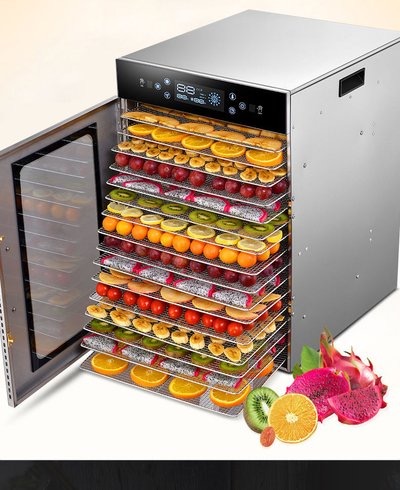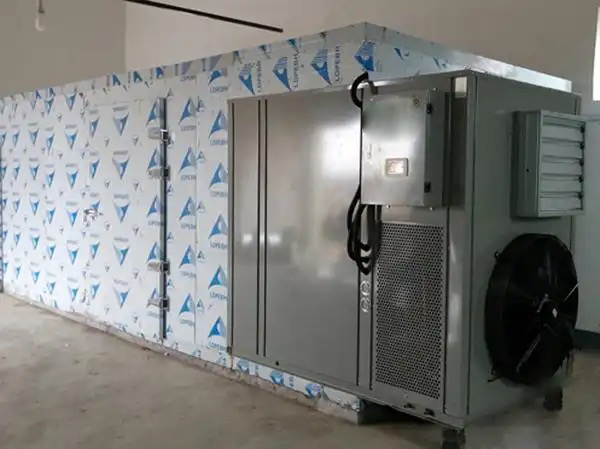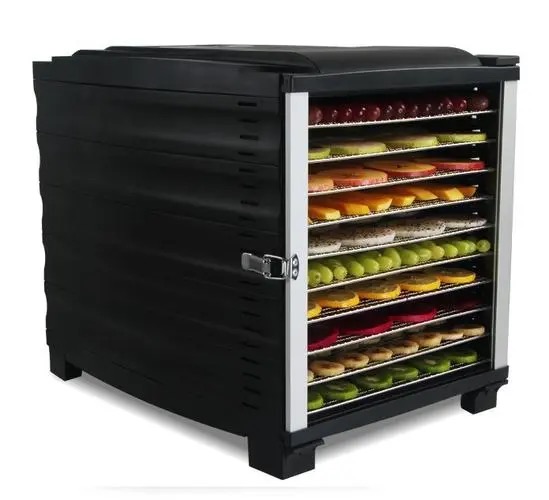
Content Menu
● Introduction
● What is a Heat Pump Dryer?
● How Does a Heat Pump Dryer Work?
● Advantages of Using Heat Pump Dryers for Food Preservation
>> 1. Energy Efficiency
>> 2. Preservation of Nutritional Quality
>> 3. Enhanced Flavor and Color Retention
>> 4. Versatility in Food Applications
>> 5. Improved Shelf Life
>> 6. Reduced Environmental Impact
>> 7. Consistent Drying Results
● Applications of Heat Pump Dryers in Food Industry
>> Fruits and Vegetables
>> Herbs and Spices
>> Meat Products
>> Seafood
● Conclusion
● Related Questions
>> 1. What types of foods can be dried using a heat pump dryer?
>> 2. How does a heat pump dryer differ from traditional drying methods?
>> 3. Are heat pump dryers energy-efficient?
>> 4. Can using a heat pump dryer affect the flavor of dried foods?
>> 5. How long can dried foods last when processed with a heat pump dryer?
Introduction
In the modern food processing industry, maintaining the quality and safety of food products is paramount. One innovative solution that has gained traction is the heat pump dryer for food. This technology not only preserves the nutritional value of food but also enhances its shelf life and flavor. In this article, we will explore the numerous advantages of using a heat pump dryer for food preservation, delve into how it works, and discuss its applications in various food sectors.

What is a Heat Pump Dryer?
A heat pump dryer is a sophisticated drying system that utilizes heat pump technology to remove moisture from food products. Unlike traditional drying methods that rely on direct heat sources, heat pump dryers operate by circulating warm air through a closed-loop system. This process allows for efficient moisture extraction while maintaining low energy consumption.
How Does a Heat Pump Dryer Work?
The operation of a heat pump dryer involves several key components:
1. Evaporator: Absorbs heat from the environment and evaporates refrigerant.
2. Compressor: Increases the pressure and temperature of the refrigerant gas.
3. Condenser: Releases heat to the drying chamber, warming the air.
4. Expansion Valve: Lowers the pressure of the refrigerant before it returns to the evaporator.
This cycle repeats continuously, allowing for efficient moisture removal from food products.
Advantages of Using Heat Pump Dryers for Food Preservation
1. Energy Efficiency
One of the most significant advantages of using a heat pump dryer for food is its energy efficiency. This technology can reduce energy consumption by up to 50% compared to traditional drying methods. By recycling heat within the system, heat pump dryers minimize energy waste, making them an environmentally friendly choice for food processing.
2. Preservation of Nutritional Quality
Heat pump dryers operate at lower temperatures than conventional dryers, which helps preserve the nutritional quality of food. High temperatures can degrade vitamins and minerals; however, with a heat pump dryer, foods retain their essential nutrients, ensuring that consumers receive high-quality products.
3. Enhanced Flavor and Color Retention
Using a heat pump dryer can significantly enhance the flavor and color of dried foods. The gentle drying process prevents browning reactions and preserves natural colors, resulting in visually appealing products that taste fresh and flavorful.

4. Versatility in Food Applications
Heat pump dryers are suitable for a wide range of food products, including fruits, vegetables, herbs, and meats. This versatility makes them an ideal choice for various sectors in the food industry, from small-scale producers to large manufacturers.
5. Improved Shelf Life
By effectively removing moisture from food products, heat pump dryers help extend shelf life significantly. Reduced moisture content inhibits microbial growth and spoilage, allowing products to be stored longer without compromising quality.
6. Reduced Environmental Impact
The energy efficiency of heat pump dryers contributes to a lower carbon footprint in food processing operations. By utilizing renewable energy sources and minimizing waste, these systems align with sustainable practices in agriculture and food production.
7. Consistent Drying Results
Heat pump dryers provide uniform drying results due to their controlled environment. This consistency is crucial for maintaining product quality across batches, ensuring that every item meets industry standards.
Applications of Heat Pump Dryers in Food Industry
Fruits and Vegetables
Heat pump dryers are particularly effective for drying fruits and vegetables. The ability to maintain low temperatures ensures that delicate flavors and colors are preserved while achieving optimal moisture removal.
Herbs and Spices
For herbs and spices, quick drying is essential to retain their aromatic properties. Heat pump dryers can efficiently dry these products without losing their essential oils.
Meat Products
In meat processing, heat pump dryers can be used to create dried meats such as jerky or biltong while ensuring safety through effective moisture removal.
Seafood
Drying seafood using heat pump technology helps maintain its texture and flavor while extending shelf life significantly.
Conclusion
The adoption of heat pump dryers for food preservation presents numerous benefits that align with modern demands for quality, sustainability, and efficiency in food processing. From preserving nutritional value to enhancing flavor retention and extending shelf life, this technology offers a versatile solution for various food applications. As more producers recognize these advantages, we can expect increased integration of heat pump dryers in the global food industry.

Related Questions
1. What types of foods can be dried using a heat pump dryer?
Heat pump dryers can effectively dry a variety of foods including fruits, vegetables, herbs, spices, meat products, and seafood.
2. How does a heat pump dryer differ from traditional drying methods?
Unlike traditional methods that use direct heat sources, heat pump dryers recycle warm air within a closed system to remove moisture efficiently while maintaining lower temperatures.
3. Are heat pump dryers energy-efficient?
Yes, heat pump dryers are highly energy-efficient and can reduce energy consumption by up to 50% compared to conventional drying methods.
4. Can using a heat pump dryer affect the flavor of dried foods?
Yes, using a heat pump dryer enhances the flavor retention of dried foods by preventing browning reactions and preserving natural colors.
5. How long can dried foods last when processed with a heat pump dryer?
Dried foods processed with a heat pump dryer can have an extended shelf life due to reduced moisture content that inhibits microbial growth and spoilage.












